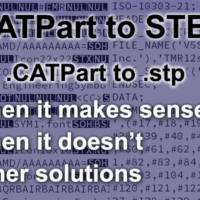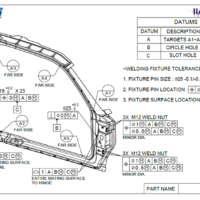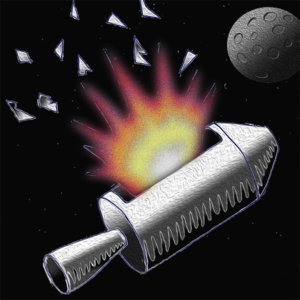
by Brad Strong | Sep 26, 2019 | Blog, CAD Translation, CAD Viewing, What's New |
A CATIA file converter can translate to and from CATIA CAD and polygonal formats. The majority of CATIA files you will encounter will be .CATPart, or part files, and .CATProduct, or assembly files, although there are three other formats you may run into. This article will deal with what those formats are, best practices to consider when reading or writing to a CATIA format, and how to get access to a CATIA file converter. CATIA Formats .Model – The .model extension is used for CATIA V4 parts and assemblies. Having the same name for parts and assemblies can create some confusion until the file is actually opened. .CATPart – A CATPart file is a part file or...

by Brad Strong | Sep 11, 2019 | Blog, CAD Performance, CAD Systems, CAD Translation, CAD Viewing, What's New |
CATPart to STEP refers to translating or converting a native CATIA CAD model to the neutral STEP CAD format. This article will discuss some of the reasons you may want to do this, reasons you may not want to do this, and other formats you might want to consider translating to. This translation can also appear as CATIA to STEP, .CATPart to .STEP, CATProduct to STEP, .CATProduct to .STEP, .CATPart to .stp, and .CATProduct to .stp. The CATPart Format The CATPart format is created by CATIA. The other two 3D CAD formats which can be created by CATIA are CATProduct, and Model. CATPart and CATProduct extensions are used for CATIA V5 and V6; the difference between...

by Brad Strong | Sep 5, 2019 | Blog, CAD Performance, CAD Translation, What's New |
This article is in collaboration with Dimensional Control Systems, authored by Ben Reese, DCS Marketing, and Norm Crawford, Model Based Definition Specialist. Part 2 of the MBD Series with Norm Crawford – understanding what MBD is and the value of implementing MBD The second part of the DCS series of Model Based Definition (MBD) articles, Norm Crawford, an expert in MBD implementation, discusses MBD with us at DCS, and shares his experiences in both successes and failures in Model Based Definition. Read the Other Parts: Understanding Model Based Definition with an Expert in GD&T What is Model Based Definition MBD? Why Implement Model Based Definition? The...

by Brad Strong | Aug 19, 2019 | Blog, CAD Comparison, CAD Performance, CAD Translation, CAD Viewing, What's New |
In 5 Ways to Improve Your Engineering Department we have compiled some of the best and highest-ranking advice for engineering managers and team members. Here’s the overview: Hire Smart, Humble Workers who Demonstrate the Ability to Get Things Done Keep Communication Flowing Between Design and Production Teams Encourage Open Debate, Make a Decision, Stop the Debate and Explain the Decision Examine Workflows and Define Processes Facilitate Continuous Improvement Hire for Smarts and Humility You want to hire the best possible person, so during the interview, don’t ask yes/no questions, but ask open ended questions that will give you some indication...

by Brad Strong | Jul 30, 2019 | Blog, CAD Systems, CAD Translation, What's New |
Parasolid to STEP translation is essentially moving from a geometric modeling kernel to a neutral CAD format. Parasolid is the one of the most popular geometric modeling kernels in use today, and is the next best format to use when converting from a Parasolid-based CAD application. The best format is always the native CAD format. Parasolid to STEP can also appear as .x_t to .STP or .x_t to .STEP. An Illustration of X_T to STP Let’s say you are working with some CAD data that originally came from Solidworks, NX or Solid Edge (all CAD systems that use Parasolid as their geometric modeling kernel). You need to bring the Parasolid data into a CAD-related...

by Brad Strong | Jul 29, 2019 | Blog, CAD Comparison, CAD Repair, CAD Translation, CAD Validation, CAD Viewing, What's New |
The purpose of How to Destroy a Spacecraft in 7 Easy Steps is to emphasize how easy it is to inadvertently make bad design and manufacturing decisions which can not only affect astronauts in the space program, but can extend to all sectors and endanger lives, products and companies. We honor the men and women who’ve given their lives to advance our space program. Many of us know the story of how the Apollo 13 spacecraft blew her oxygen tanks near the moon, nearly costing the lives of three astronauts, but through heroic acts and ingenuity, managed to limp home with all her crew intact. The incident nearly derailed the Apollo space program – but few of us know...







